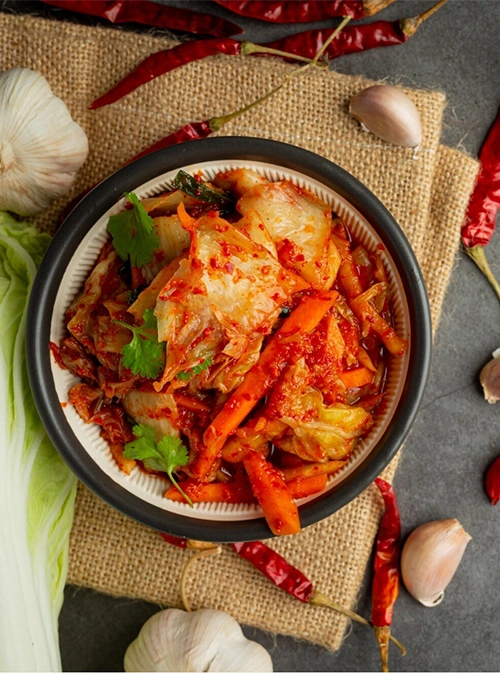

Top Health Benefits of Spicy Korean Kimchi You Need to Know
Kimchi is a nutritional powerhouse that offers a unique combination of health benefits due to its rich composition of fermented vegetables, particularly Napa cabbage, carrots, garlic, and chili peppers. Being naturally low in calories and fat, it is ideal for weight management. The fermentation process enhances the probiotic content of kimchi, which helps support a healthy gut microbiome, improves digestion, and may even boost immune function. It's a great source of dietary fiber, promoting satiety and regular bowel movements. Additionally, kimchi is packed with antioxidants and essential vitamins such as vitamin A, vitamin C, and some B-complex vitamins. The garlic and ginger in kimchi provide anti-inflammatory and antimicrobial properties, making it a supportive food for overall health and disease prevention. Moreover, the capsaicin in chili peppers may help in boosting metabolism and burning fat, making kimchi a great complement to various healthy diets.
Recipe :
For 4 people
Enjoy your flavorful, probiotic-rich homemade kimchi!
When preparing kimchi at home, attention to detail and proper handling are essential to ensure safety, taste, and effectiveness of fermentation. The cabbage should be salted thoroughly and left to rest for a few hours to draw out moisture, which helps in maintaining a crunchy texture. It’s crucial to rinse the salted cabbage well to avoid excessive saltiness in the final product. The spice paste, typically made from garlic, ginger, red chili flakes, and sometimes fish sauce or fermented shrimp, must be blended uniformly and massaged into the vegetables with clean hands or gloves. Sanitation is key—ensure all utensils and containers are sterilized to prevent harmful bacteria from contaminating the ferment. During fermentation, store the kimchi in an airtight glass or plastic container, leaving enough headspace for gas buildup. Let it ferment at room temperature for 2 to 3 days, depending on your climate, then refrigerate to slow down the fermentation. Tasting during the process can help you adjust the flavor to your preference, from mildly tangy to intensely sour.

Kimchi is suitable for a variety of dietary lifestyles, especially for those following vegan or vegetarian diets—as long as traditional ingredients like fish sauce are substituted or omitted. It aligns well with low-calorie, gluten-free, high-fiber, and DASH (Dietary Approaches to Stop Hypertension) diets due to its plant-based, low-energy-density nature and high nutrient content. However, those on ketogenic diets may need to monitor their intake due to the natural sugars and carbohydrates present in some versions. For paleo followers, sugar should be replaced with a paleo-friendly sweetener. Individuals practicing intermittent fasting can include kimchi in their eating window as a flavor-rich, nutrient-dense side dish. Those sensitive to sodium should consume it in moderation, as kimchi can be quite salty due to the brining process. Additionally, people with gastrointestinal issues such as acid reflux or IBS may need to monitor their response to fermented foods and spicy ingredients. Overall, when thoughtfully prepared, kimchi can fit into and enhance many dietary patterns.
...